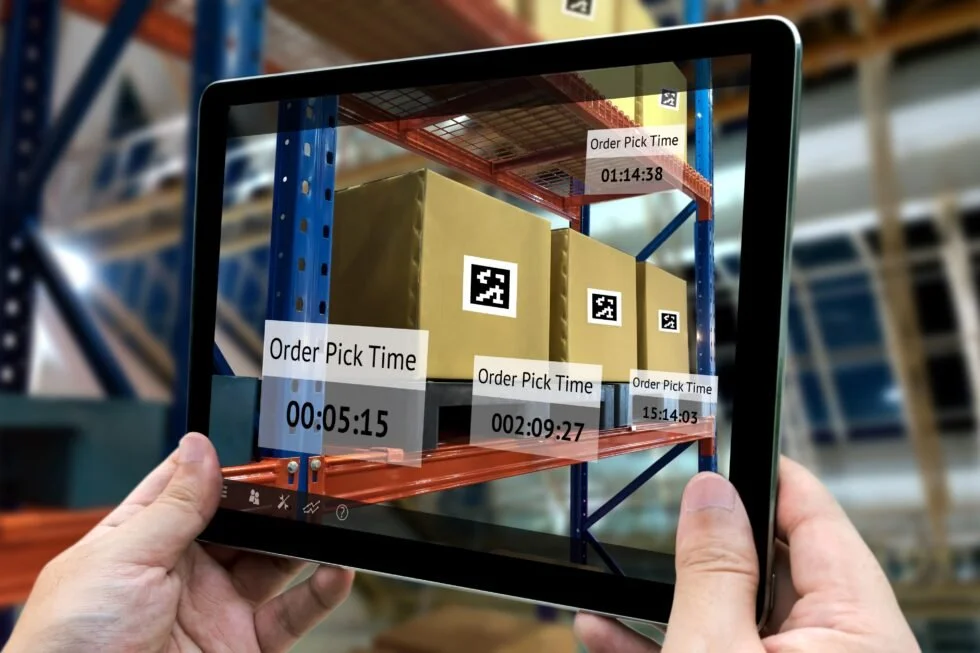Supercharging Logistics: How Supply Chain Sensors will Lower Prices and Increase Connectivity
2/25/21
How will the supply chain get to the next level of connectedness? Internet-enabled sensors.
Recently, I wrote about how COVID-19 is changing the supply chain and logistics. One of the issues I touched upon was the importance of organizing logistics information around latitude, longitude, and altitude; that is, “geospatially”. Think of a supply chain as a nervous system with neurons reporting information from every corner of the body. Geospatial information is the raw data about stuff that is moving within a network. Think of that stuff as “hosted assets”. The purpose of the network is to move the hosted assets as efficiently as possible. Think of the “network” as servient infrastructure, since it is there purely to “serve” the movement of the hosted assets.
Today, a relatively few hosted assets are connected to the IoT, so the information is spotty. But you might imagine the information is incredibly valuable if it can be retrieved, organized, and analyzed – a process called geospatial “intelligence” (GeoIntel). It’s no different than your brain’s reaction to data. Touch a hot stove and the stimulus causes an immediate reaction. Unfortunately, our supply chain is not as adept as the nervous system at sensing the event (burning finger), communicating the information, and reacting intelligently. You might imagine that a slow response, or a confusing signal might have severe consequences. Our supply chain is light-years behind the natural world and far less efficient.
For example, there are 50 million containers moving 95% of the world’s freight — yet fewer than 50,000 containers equipped with remote sensing capabilities. One of the things the pandemic surfaced was that globalization requires reliable supply lines. We have seen how critical supply chains are, and how vulnerable they can be to socioeconomic whim. System resilience, reliability, and efficiency is largely dependent on robust and dependable real-time information.
According to the National Science Foundation, there are 50 billion internet-enabled sensors currently deployed. Some sensors now cost less than ten cents and are the size of a postage stamp. The number of sensors is compounding at a rate of 30% per year thanks to falling prices, expanding capabilities, and miniaturization. Increased deployment will enable users to query single units, or curate groups of widely distributed, heterogeneous sensors in real time.
Historically we have designed sensors to provide location information. We might sometimes need temperature, velocity, weight, ownership, or other indications. But as GeoIntel evolves, innovators will harness the curated intelligence to drive efficiency. Economics and the health of our planet require us to do more with less. Less infrastructure. Less inventory. Less energy. Yet moving more assets to more people with greater reliability. We know that information paves the path to greater efficiency. Our analytical thirst is growing exponentially, putting considerable strain on existing infrastructure to retrieve, store, curate, and analyze the sensed data.
It’s not just the sensors that are becoming more ubiquitous, it’s also connectivity. Those connected sensors are moving from bluetooth to WiFi to 5G networks to LEO (low-earth orbit) satellites and back again. We require uninterrupted custody of the information and control of the hosted asset as they move around the world from network to network. Today less than 1% of containers, pallets, trucks and ships produce actionable geospatial information. It won’t be long before most transient assets will produce actionable data, and a plethora of tools will help us understand what it all means.
There are several initiatives to digitally organize aspects of the supply chain (@maersk, @WarehouseExchange, @FlexPort), as well as efforts to build a common backbone upon which the tool makers will live. For example, my firm ESP Logistics, recently partnered with GIS leader Esri to create a logistics platform powered by geospatial data.
With decreasing costs, better connectivity, increased sensors, and faster data processing we will better understand how things flow through the system, and what changes we can make to reduce systemic impedance – the enemy of efficiency and the biggest contributor to global warming. Data has no value if you can’t understand what it’s telling you. GeoIntel is the lens logisticians look through to reduce waste within a logistics network.
For thousands of years, merchants have been asking a simple question: “Where’s my stuff”. In the last decade or two we’ve developed some ability to answer that question…. sometimes. But there are much more meaningful questions to ponder. GeoIntel allows us to find the inefficiencies – congested terminals, misplaced inventory, labor disruption, bad weather, or other anomalies, and create solutions that optimize the process. Innovative applications will use digital twins to optimize freight flow by uncovering patterns of systemic behavior using machine learning (ML) and artificial intelligence (AI) to respond to situations with real-time solutions.
Our ability to predict supply chain impedance will grow substantially from this data rich environment. Pattern prediction is where AI and ML shine; by absorbing mountains of data from billions of connected sensors to understand how productive the network is. Using that data, logistics companies will be able to see where there is friction, where is efficient flow, and why.
Finding these patterns is key. We know the data is there, but without connected sensors, without the ability to track the other 99% of containers, pallets, trucks and ships within the supply chain ecosystem, the industry will not find the inefficiencies that are costing many industries money and changing the planet’s ecosystem. GeoIntel will improve the future supply chain, as well as the world.
AUTHOR
Jonathan Rosenthal, Chief Executive Officer
Mr. Rosenthal brings 29 years of experience with leadership roles in some of the largest and most complex restructurings in history, including Pacific Gas and Electric, United Airlines, and Foster Wheeler. Before ESP, he founded and served as chairman and CEO of NetAir International Corporation, which became the nation’s largest non-scheduled certificated carrier.


